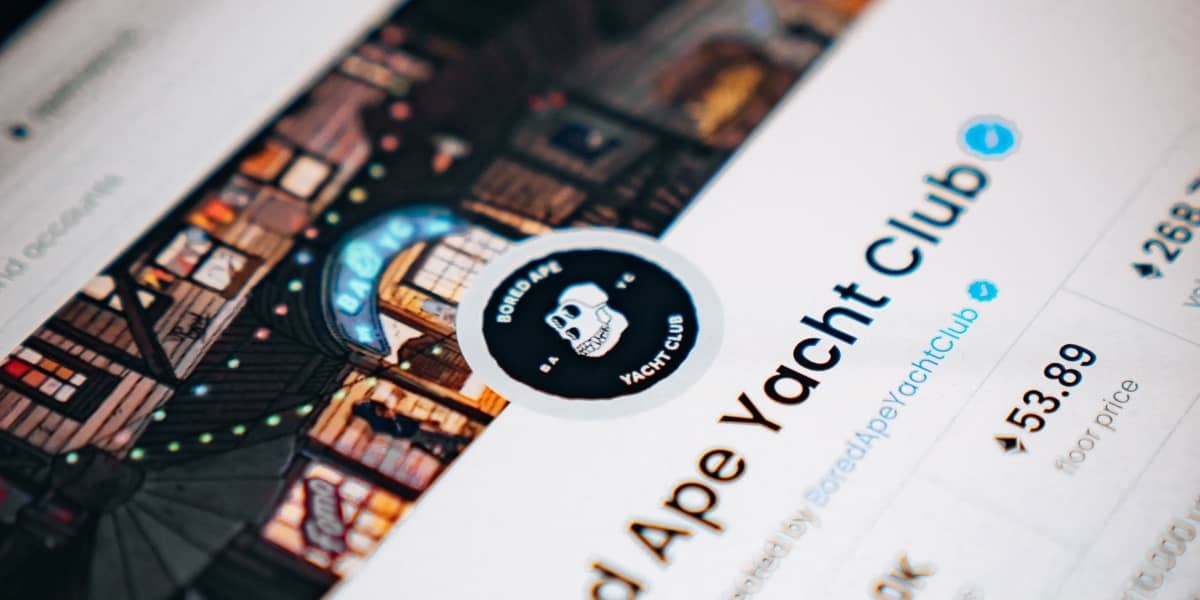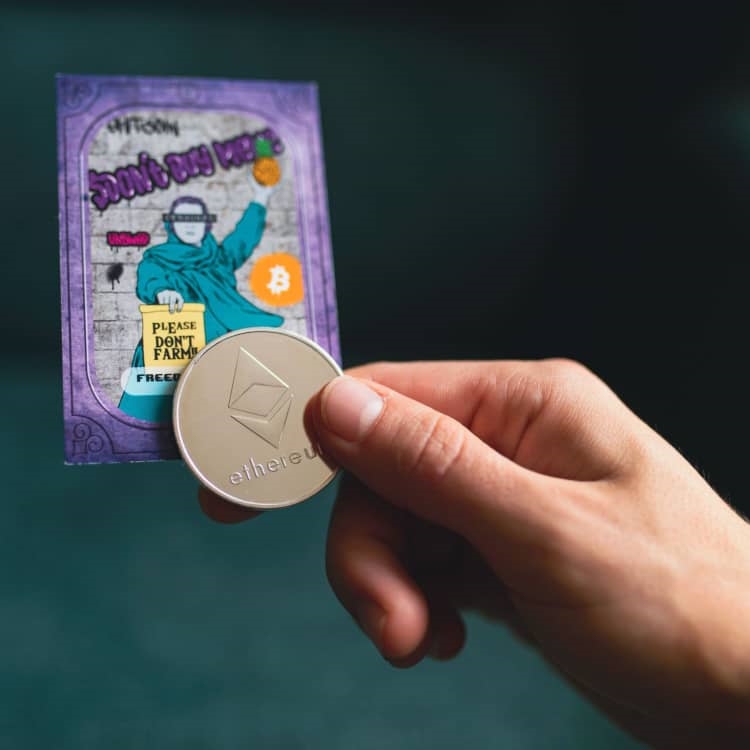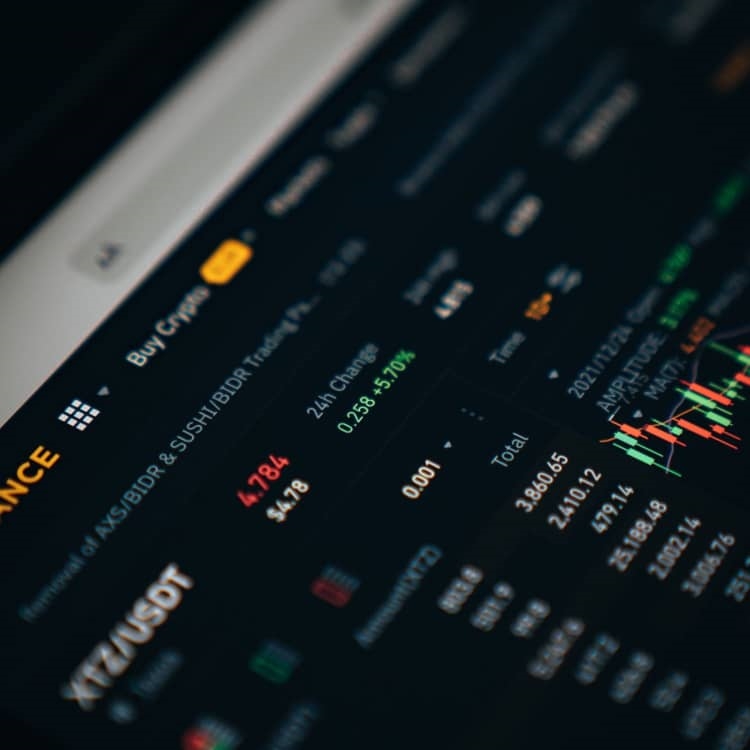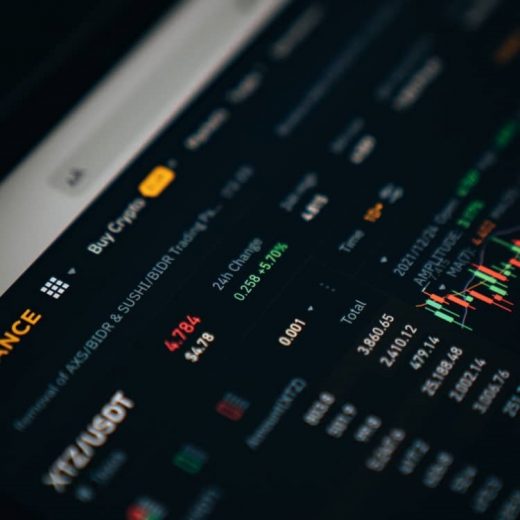What is an NFT? The Complete Guide to Non-Fungible Tokens

Non-fungible tokens (NFTs) are a new type of crypto asset taking the blockchain world by storm. It’s hard to go a day without hearing something about NFTs. But what are they, and why are they so popular?
This article will give you everything you need to know about what an NFT is, how it differs from other types of tokens, why they’re so popular, and more.
What is an NFT?
NFTs are non-fungible tokens. Okay, that probably doesn’t help much. So let’s dive deeper into what it means to be non-fungible.
A fungible token can be replaced by another token of the same type and value. For example, if you have one BTC and someone else has one BTC, you can trade them like for like with no problem.
On the other hand, non-fungible tokens are all unique. Each token is valued differently and can’t simply be replaced by another. As each NFT is unique, many people see them as valuable assets.
For example, how many Mona Lisa paintings are there? One. There can never be two Mona Lisa paintings because the physical art is unique and irreplaceable. This is the same idea with crypto art (NFTs).
But Can’t I Just Save Someone’s NFT?
You can save a picture of any NFT to your device, but you don’t OWN the NFT (the data stored on the blockchain). As these assets are stored on a public digital ledger, NFTs act as public proof of digital ownership.
The crypto art holder can prove that they are the rightful asset owner by showing the unique cryptographic key on their digital wallet, but the person who saved the image cannot.
How Do NFTs Work?
NFTs are created through a process called “tokenization.” This simply means that you take something that is not a token and turn it into one. Many believe that everything will one day be tokenized.
In the case of NFTs, this usually takes the form of digital assets like pictures, videos, or music. These assets are then “minted” into tokens and stored on blockchain technology. Each token is unique and can be sold, traded, or used in other ways.
Most current NFTs are stored on the Ethereum blockchain, but other blockchains, like Solana and Polygon, are gaining traction in the NFT space. You see, the fees on Ethereum for an NFT transaction are getting higher and higher with growing demand, so some projects are starting to look for alternative blockchain technology with smaller fees.
The Technical Details of NFTs
We’ve explained what NFTs are and how they work, but let’s get into some of the technical details. What actually makes the image a token? Do you own the image or something else?
We can answer these questions by explaining that non-fungible tokens are units of data stored on a blockchain. It’s these data units that you’re buying when you purchase an NFT, not just the image itself.

However, owning an NFT doesn’t mean that you own the copyright to use the image as you wish. The creator of the NFT can replicate the digital asset at their will. As such, NFTs prove that you own that specific asset on the blockchain, but it doesn’t protect you from copyright law.
For example, you could buy an NFT image of the Nike logo, but Nike still has the copyright to that image and can use it however they want.
Cool! So What Can I Do With NFTs?
Now that you know all about non-fungible tokens let’s look at some of the things you can do with them. Here are just a few examples:
- Create digital art and sell it online
- Build a game that uses NFTs as in-game assets
- Use NFTs to represent real-world objects like cars or houses
- Store sensitive data on the blockchain that can’t be tampered with or copied
As you can see, there are several different ways to use NFTs. They can be used to represent digital or physical assets, store sensitive data, or act as tickets for events and products. The possibilities are endless, and we’re just starting to scratch the surface!
They are currently used primarily in the digital art world, where NFTs are driving a new artistic movement. We see different ways to display art, digital artists finally being rewarded for their work, and a greater connection between digital artists and collectors.
Recently, Snoop Dogg predicted that “NFTs will replace all ticketing.” We are already starting to see this in the music industry, and it’s clear why. Here are just some of the benefits of using NFTs over traditional tickets:
- Prevent fake tickets
- Reduce costs
- Stop the Ticketmaster monopoly
- Perpetual revenue
- Collectables
- New revenue opportunities
It’s clear that the future of ticketing is non-fungible tokens, and we’re excited to see what industry is next to be disrupted by this exciting technology. To get there, however, we need to address the current scalability issues of the Ethereum blockchain.
If we are going to be using NFTs for ticketing and other high-traffic applications, the Ethereum blockchain needs to handle the load. Thankfully, many projects are working on scaling solutions that will help make this possible.

Where Can I Buy NFTs?
The most popular NFT marketplace is currently OpenSea. They account for more than 97% of all NFT transactions. So if you’re looking to buy or sell NFTs, OpenSea is the place to go. And be sure to check out our ultimate guide on how to buy an NFT, while you’re at it!
It has advanced filtering, a user-friendly interface, and a first-mover advantage. Other NFT marketplaces that are starting to gain traction include Rare Bits and DappRadar, but OpenSea is still the king of NFTs.
Most NFTs on the NFT market are on the Ethereum blockchain, but OpenSea has recently implemented cross-chain compatibility, which has seen Polygon NFTs rise in popularity. These NFTs have smaller fees and faster NFT transactions, making them a desirable option for many.
The NFT BOOM!
Non-fungible tokens are all the rage right now, and for good reason. They offer a lot of benefits that other types of tokens don’t. As such, the prices of NFTs are starting to climb, with some reaching values in the millions of dollars.
Perhaps most notable is the CryptoPunks project, which allows you to buy digital punk characters used as status symbols among celebrities and voices in the tech space.
The NFT that largely contributed to this NFT boom is a piece of artwork that sold for $ 69 in March 2021. The artist Mike Winkelmann (Beeple) created “The First 5000 Days” and set a record for the most expensive digital artwork ever recorded.
As NFTs become more popular, we can only expect the prices of these assets to continue to increase. As a result, there are plenty of opportunities to make money in the NFT market. First, however, you must do your homework to find projects with strong communities and use cases that drive demand. Do that, and you’re sure to see success.
FAQ
What are some of the issues with NFTs?
There are still a few issues that need to be worked out with NFTs. Here are my top four concerns:
Centralized servers – While NFTs are stored on the blockchain, we still go through centralized servers to interact with them. Not many know this, but most dApps use Infura to interact with the blockchain.
With many NFTs, the URL is simply pointing to a VPS that’s running Apache, which can be altered by someone who gains access to the machine. Did you know that your NFT can be displayed as different images, depending on which platform it’s viewed? This problem should be fixed in time, but it’s something to be aware of.
Money laundering – Another issue with NFTs is that they can be used for money laundering. If you have $ 5 Million in illegal money, you could create your own NFT, put it on sale for $ 5 Million, and then use the illegal money to purchase it. There are many ways to pay less tax or hide money by trading NFTs, which regulators will need to address in the future.
Scalability – NFTs and the whole blockchain space is facing scalability issues. With more and more people trading NFTs, blockchains struggle under the load. This has caused the Ethereum gas fees to skyrocket as people are forced to compete for space on the network.
The good news is the future looks bright, thanks to new L1 blockchains and L2 scaling solutions, like Polygon and Loopring. These should help alleviate the load and make NFTs more usable for everyday transactions.
Climate concerns – Finally, some people are concerned about the impact NFTs have on the climate. Each NFT requires a transaction on the blockchain, which takes up space and consumes energy. While this might not be a big deal now, it could become a problem in the future as NFTs become more popular.
How is an NFT different from a cryptocurrency?
The primary difference is that cryptocurrencies are fungible. My BTC is the same as your BTC. This is not the case with NFTs, which are unique and can’t be replicated. Cryptocurrencies are also often used for payments, while NFTs are more often used to prove ownership or as digital assets.
How are NFTs different from fungible tokens?
NFTs are non-fungible, meaning that each unit is unique and can’t be replicated. Fungible tokens are interchangeable, and all have the same value. For example, a dollar is a fungible token, but a Picasso painting is not.
What do you get when you buy an NFT?
When you buy an NFT, you’re buying a unique cryptographic key representing the image or other asset. This key is used to verify NFT ownership and allows you to use it in whatever way you want. However, owning an NFT doesn’t mean that you own the copyright to use the image as you wish.
Do NFTs constitute an artistic movement?
Some people in the art world are starting to see NFTs as a new form of artistic expression. They offer many unique possibilities that other forms of art don’t, and we’re sure to see more creative uses for them in the future.
For example, an artist could create digital NFT art and display it in the metaverse! This would be a much more immersive experience than looking at a traditional painting or sculpture.
Furthermore, the NFT market empowers artists to create and own their work, which is a valuable asset. Artists have often had to give up control of their work to sell it in the past. With NFT art, that’s no longer the case! It means that ANYONE with an artistic flair can create and sell their work without knowing the right people.
What is an NFT, and should you invest in them?
An NFT is a non-fungible token, which is a unique token that can’t be replicated or traded like for like. NFTs are still in their early days, so it’s important to do your research before investing in them. However, the market is booming, and big profits are there to be had. We can understand why as they are disrupting nearly every industry imaginable.
If you have an NFT, do you own the asset?
No, you don’t always own the asset. You usually only own a cryptographic key representing the asset, allowing you to use it however you want. Some NFT creators pass on the rights to use the asset as they wish, whereas others retain complete control of the media. Therefore, it’s important to read the terms and conditions before purchasing an NFT.
For example, owning a CryptoKitty NFT allows you to use the image to earn up to $ 100,000 in gross revenues each year. This means you could print your NFT image on a t-shirt and sell it. But in another example, the Kings of Leon NFT digital collection is only to be enjoyed personally.
Who verifies that the NFT is legit?
Anyone can verify the legitimacy of an NFT by looking at the public blockchain. This is a permanent, unchangeable record of all transactions that have ever taken place on the network.
This is a quick and easy process that anyone can do. With a public record of every transaction, it’s easy to see who owns what and when. This makes it difficult for scammers to sell fake assets.
Which blockchains does OpenSea support?
With OpenSea’s new cross-blockchain functionality, you can now easily trade across Ethereum, Polygon, and Klatyn blockchains. Many users flock to Polygon as the gas fees are much lower than Ethereum.
What are the most expensive NFTs?
At the time of writing, here are the most expensive NFTs:
- The Merge – $ 91.8 million
- The First 5000 Days – $ 69 Million
- Human One – $ 28.9 Million
- CryptoPunk #7523 – $ 11.7 Million
- CryptoPunk #3100 – $ 7.58 Million
- CryptoPunk #7804 – $ 7.57 Million
- Crossroads – $ 6.6 Million
- Ocean Front – $ 6 Million
- CryptoPunk #5217 – $ 5.45 Million
- Stay Free – $ 5.4 Million
However, this list constantly changes as new and exciting projects come onto the market. What’s your favorite? Mine is Human One as it’s more than just an image. The hybrid design uses physical elements and a digital avatar, a cool concept within digital artwork.
So What’s the Bottom Line?
Non-fungible tokens are a new type of crypto asset taking the blockchain world by storm. They differ from other kinds of tokens in that each one is unique, and there can’t be a like-for-like NFT sale.
The most significant benefit of NFTs is that they allow for the ownership and transfer of digital assets in a secure and trustless manner. This has led to an explosion in creativity, with people using them for everything from digital artwork to in-games assets.
As NFTs are still in their early days, it’s important to do your research before investing in them. However, potential profits are there for the taking, and they can be BIG! So keep an eye on this exciting new asset class.
(32)


